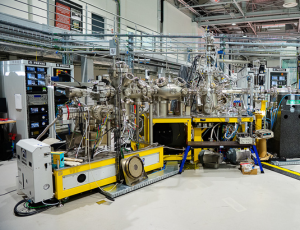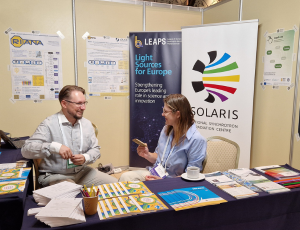 Web Content Display
Web Content Display
SOLARIS centre
 Web Content Display
Web Content Display
New end station on PHELIX beamline.

As part of investments related to education and scientific activity, the Minister of Education and Science granted funds for the construction of a new end station. Research equipment for photoelectron spectroscopy under increased pressure will be built at the PHELIX beamline.
With the development of the experimental and theoretical aspects of surface science, knowledge of the complex nature of surfaces at the atomic scale has increased significantly. This, in turn, opened the way to modify and control this nature and to produce improved materials used in, among others, catalysis, solar cells and biosensors. A number of challenges related to traditional methods of surface characterization prompted the scientific community to look for a research method that would allow measurements to be made in conditions similar to real conditions.
The method of near ambient pressure photoelectron spectroscopy (NAP-XPS) is widely popular among scientists from around the world. Equipment for this type of research is available in major synchrotron centers. This is due to the specificity of such measurements - soft X-rays excite low-energy electrons, which are absorbed in the gas phase, making the signal collected by the analyzer weak. A pressure of 1 mbar shortens the electron range to about 1 mm. A very intense source (synchrotron light) is needed to get a satisfactory result.
Thanks to funding received from the Ministry of Education and Science, the Solaris Centre will soon join this group. The funds, amounting to PLN 8,125,420, come from the budget for investment in education and scientific activities as part of a project prepared by Dr Magdalena Szczepanik. The project is a success of the entire team of the SOLARIS Centre, which for many years has been strongly activating the scientific community in the area of NAP-XPS research within national as well as international cooperation in CERIC and LEAPS consortia. It is worth noting that the project has the solid support of several research groups (e.g. from the University of Warsaw, Gdansk University of Technology, Charles University in Prague), who have been cooperating very strongly on the NAP-XPS@SOLARIS project for several months, defining the apparatus requirements and outlining the research programme.
Most of the beamlines at the SOLARIS Centre are designed so that new research branches can be added to the infrastructure in the future . The construction of the second branch of the PHELIX line opens up new possibilities for innovative research. The NAP-XPS station, operating at elevated pressure, will allow processes to be followed under real working conditions of relevance to catalysis, nanomedicine or new energy sources. The NAP-XPS station, as the only infrastructure of its kind in Central and Eastern Europe, will allow interdisciplinary and multidisciplinary research in many fields.
Published date 17/07/2023
Recommended



